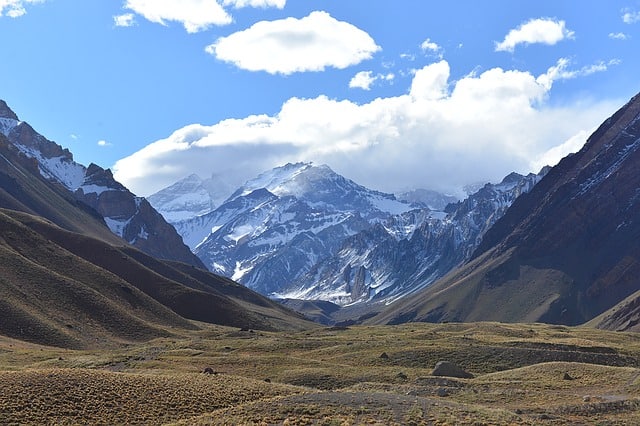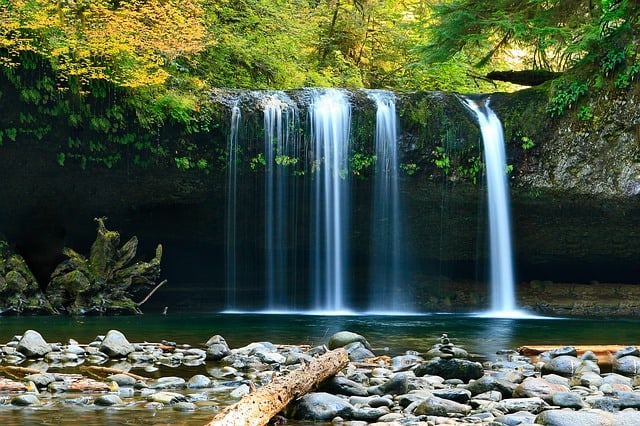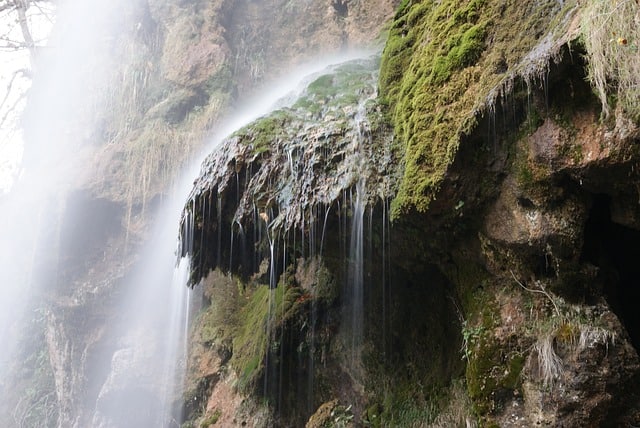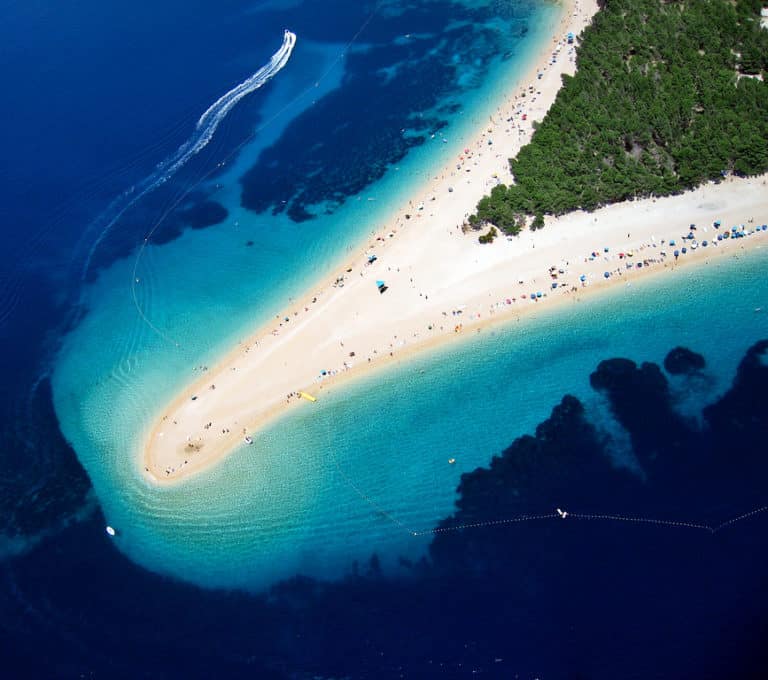15 Magnificent Facts About the Andes Mountains You’ll Wish You’d Known

Stretching for 4,300 miles along South America’s western coast and spanning up to about 430 miles in width, the Andes are the world’s longest mountain range. They are also the highest mountain range outside of Asia, with the highest point being 22,838 feet.
The climate varies across the mountain range as it stretches from the north end of South America to the southern tip. Some climates are freezing cold while others are fairly warm. This depends on the altitude of each climate and its distance from the equator. The height of each mountain may also influence its climate.
The Andes can be divided into three sections. Namely, the Northern Andes in Venezuela and Colombia, the Southern Andes in Argentina and Chile, and the Central Andes in Ecuador, Peru, and Bolivia. Let’s explore 15 magnificent facts about the Andes Mountains.
Fact 1: Formation of the Andes Mountains
The Andes Mountains are a result of global plate tectonic forces that occurred in the Cenozoic Era, about 65 million years ago, which build upon previous geologic activity. Roughly 250 million years ago, the crustal plates that encompass the Earth’s landmass were part of a single supercontinent known as the Pangaea.
The Pangea later broke up into various plates, which dispersed outwards and ended up taking up the form and position of the continents we have today. The collision of two of these plates – the oceanic Nazca Plate ant the continental South American Plate – resulted in the orogenic activity that produced the Andes Mountains.
Fact 2: The Andes is the origin of the Amazon River
Not only the Amazon River that begins in the Andes, but also the Orinoco River. These are two South America’s major river networks.
Fact 3: The Andes cut across seven countries
The Andes Mountains span through seven of South America’s countries, delivering a distinctive aura of culture, history, terrain, and activity in each. The Southern Andes cuts across Argentina and Chile while the Northern Andes cuts through Venezuela and Colombia. Ecuador, Bolivia, and Peru play host to the Central Andes.
Fact 4: The Andes are a series of chains
The Andes are not just a single chain of mountains. Instead, they are composed of a number of parallel chains that connect, from place to place, in orographic rows or detach from one another, creating high plateaus between them.
Fact 5: Sections of the mountains could erupt at any time
The Andes Mountains are volcanic. While some are dormant volcanoes, others are active and have the potential to erupt at any moment. In fact, the highest volcano in the world is the Andean Mountains – Cotopaxi, standing 19,347 feet high.
Fact 6: The Andes is one of the world’s leading potato and tomato producers
Tomatoes and potatoes, two of the most prevalent food crops in the world, originated from the Andes. Peru, one of Andes host countries, is home to at least 3,800 different varieties of potatoes. It’s also worth noting that Coca leaves originated from the western slopes of the Andean mountains. Coca tea is a popular beverage in the high Andes, thanks to its effectiveness in relieving symptoms of altitude sickness.
Fact 7: The Andes Mountains are a hotbed of biodiversity
Popular for its wonderful biodiversity, the Andes Mountains consist of three different major climatic zones, namely:
- Wet Andes, in the south
- Tropical Andes, in the north
- The dry Andes, in the center
A vast variety of wildlife, including a little over 600 different species of mammals, 400 species of fish, at least 1700 types of birds, over 1000 amphibians, about 600 reptiles’ species, and over 30000 species of endemic plants can be found in the Andes Mountains.
Fact 8: The Andes is home to a vast range of mineral resources
Yanacocha in Peru is the world’s largest gold mine. Chile and Peru, on the other hand, jointly account for about 50% of all copper mined in the world. In fact, it is estimated that a whopping 750 million tons of copper deposits in the Andes is yet to be discovered.
There could also be about 13,000 tons of gold, 20 million tons of molybdenum, and 250,000 tons of silver sitting in the Andes waiting to be discovered.
Fact 9: The Andes offer endless options to travel enthusiasts
The Andes are one of the most sought-after travel destinations in South America, especially for tourists who love high-altitude expeditions. These mountain ranges offer a playground for myriad outdoor adventures, including mountain climbing, stargazing, hiking, cycling, white water rafting, skiing, and horse riding.
Fact 10: The Incas are native to the Andes
The Inca Civilization called the northern Andes home between the 15th and the 16th centuries. However, they were decimated by European explorers’ lethal diseases.
Fact 11: The second highest plateau in the world is found in the Andes
The Andes are home to a number of high plateaus. One of the plateaus, the Altiplano, is the second highest in the world after the Tibetan Plateau.
Fact 12: The Andes region is both wet and dry
In light of the fact that the mountain range acts as an expansive wall between South America and the Pacific Ocean, it has a tremendous effect on the region’s climate. The northern part of the Andes is characterized by warm and rainy conditions. The Atacama Desert, characterized by a dry climate, dominates the western parts.
Fact 13: The farthest point from the Earth’s Center is found in the Andes
There’s no other location on the surface of the Earth that is farther from the Earth’s center than the peak of Chimborazo in the Ecuadorean Andes. Located in Ecuador, Mount Chimborazo is a dormant volcano. It last erupted over 10 centuries ago.
Fact 14: Some islands in the Caribbean Sea are actually submerged peaks of Andes
The islands of Curacao, Aruba, and Bonaire, found in the Caribbean Sea, off the Venezuelan coast are basically submerged summits of the far northern edge of Andes Mountains.
Fact 15: The Andes Flight Disaster of 1972
The plane crash disaster occurred on 13 October 1972. It involved Uruguayan Air Force Flight 571, a chartered flight with 45 people on board. Those on board included a rugby union team, their loved ones, and associates.
The disaster was dubbed the Miracle of the Andes following the rescue of 16 survivors on 23 December 1972, over two months after the accident. At 11800 feet elevation, with virtually no food and no source of heat, the survivors weathered the harsh conditions by feeding largely on the bodies of their dead colleagues.
They were discovered 72 days later by Chilean arriero Sergio Catalán who facilitated their rescue by authorities.
Sources:






